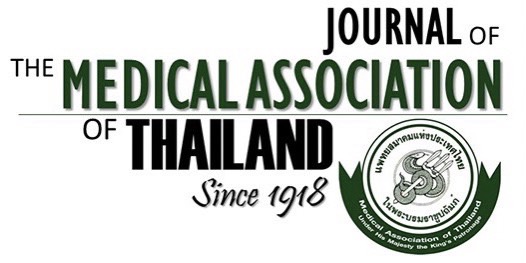Nutritional Status and its Impact on Clinical Outcomes for Patients Admitted to Hospital with Cirrhosis
Chalermrat Bunchorntavakul MD*,**, Ruamthip Supanun MD*, Amporn Atsawarungruangkit MD*,**
Affiliation : * Department of Medicine, Rajavithi Hospital, College of Medicine, Rangsit University, Bangkok, Thailand ** College of Medicine, Rangsit University, Bangkok, Thailand
Background : In patients with cirrhosis, nutritional status is an important predictor of clinical outcomes that can be assessed
in clinical practice using conventional methods. Previous studies have shown that malnutrition is associated with increased
morbidity and mortality in patients with cirrhosis. However, there have been very few reports from Southeast Asia.
Objective : To determine the prevalence of malnutrition in patients with cirrhosis who are admitted to hospital and to assess
its correlation with mortality, complications, length of stay, and total cost of hospitalization.
Material and Method: This prospective non-interventional study included 60 consecutive patients with cirrhosis admitted to
Rajavithi Hospital, Bangkok, Thailand, from August 2013 to February 2014. Baseline demographic and clinical data during
their hospitalizations were collected prospectively. Nutritional status was assessed by subjective global assessment (SGA)
and anthropometry (body mass index (BMI) and mid-arm circumference (MAC)). Malnutrition was defined as SGA class B/
C and MAC of <5th percentile of the age- and gender-matched reference population.
Results : Of the 60 patients, 70% were male. The most common causes of cirrhosis were alcohol (50%) and hepatitis C
infection (35%). Most patients were classified as Child-Pugh class B (41.7%) or C (36.7%). The mortality rate was 26.7%,
and the most common complications were infections (60%) and renal failure (43.3%). The median length of stay in hospital
was 8.5 (1-51) days, with a median cost of 1,163 (183-9,969) US dollars. The prevalence of malnutrition varied between 18%
and 92% depending on the assessment method employed: 18% were considered malnourished when assessed by BMI, 63%
by MAC, 78% by serum albumin, 65% by absolute lymphocyte count, and 92% by SGA. Patients with malnutrition showed
a trend toward increased mortality, complications, length of hospital stay and cost; however, the differences were not
statistically significant. Significant predictors of mortality included Child-Pugh class B (16% mortality) and C (50% mortality),
severe malnutrition as assessed by SGA (35% mortality), presence of ascites (relative risk, RR: 2.3), hepatic encephalopathy
(RR: 2.5), hepatorenal syndrome (RR: 4.1) and renal failure (RR: 3.3).
Conclusion : Malnutrition is common in hospitalized patients with cirrhosis, and patients with malnutrition showed a trend
toward increased complications and mortality. Severe malnutrition, as identified by SGA, and advanced cirrhosis were
predictors of in-hospital mortality.
Keywords : Nutritional status, Cirrhosis, Malnutrition, Mortality, Complications, Hospital stay length, Hospitalization costs



